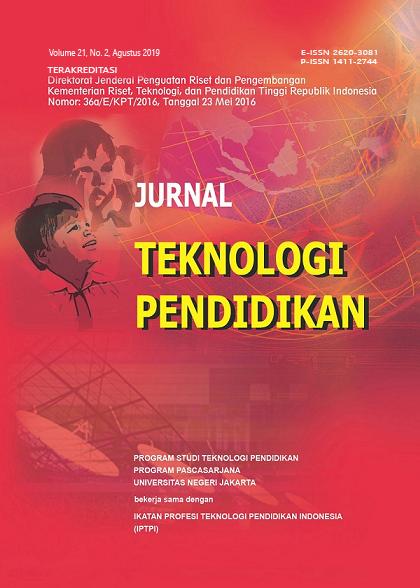Trend Penelitian Penyelesaian Studi di Program Studi Teknologi Pendidikan Universitas Negeri Jakarta
DOI:
https://doi.org/10.21009/jtp.v21i2.12978Keywords:
trends, research paradigms, research methods, educational technology areas, applied scienceAbstract
As an applied scientific discipline Educational Technology (ET) develops by utilizing and supported by other relevant sciences, such as psychology, communication, Information and Communication Technology (ICT), and education. Besides that as a science, Educational Technology is built on a clear foundation of ontological, epistemological, and axiological philosophy. This study aims to find empirical facts about the tendency of ET students to research their final project, viewed from three aspects, namely the paradigm and research methods used, and the ET area as the research domain. The research method used is quantitative descriptive research with a survey approach and is done through document analysis/content (content analysis). The documents analyzed were 577 scientific works, such as theses and dissertations. The results showed that research conducted by ET students of the Jakarta State University over the past 7 years tended to use qualitative research paradigms, research and development methods, and development areas.
Downloads
Published
How to Cite
Issue
Section
License
Jurnal Teknologi Pendidikan is an Open Access Journal. The authors who publish the manuscript in Jurnal Teknologi Pendidikan agree to the following terms.
Attribution-ShareAlike 4.0 International (CC BY-SA 4.0)
-
Attribution — You must give appropriate credit, provide a link to the license, and indicate if changes were made. You may do so in any reasonable manner, but not in any way that suggests the licensor endorses you or your use.
-
ShareAlike — If you remix, transform, or build upon the material, you must distribute your contributions under the same license as the original.
- No additional restrictions — You may not apply legal terms or technological measures that legally restrict others from doing anything the license permits.
Notices:
- You do not have to comply with the license for elements of the material in the public domain or where your use is permitted by an applicable exception or limitation.
- No warranties are given. The license may not give you all of the permissions necessary for your intended use. For example, other rights such as publicity, privacy, or moral rights may limit how you use the material.








